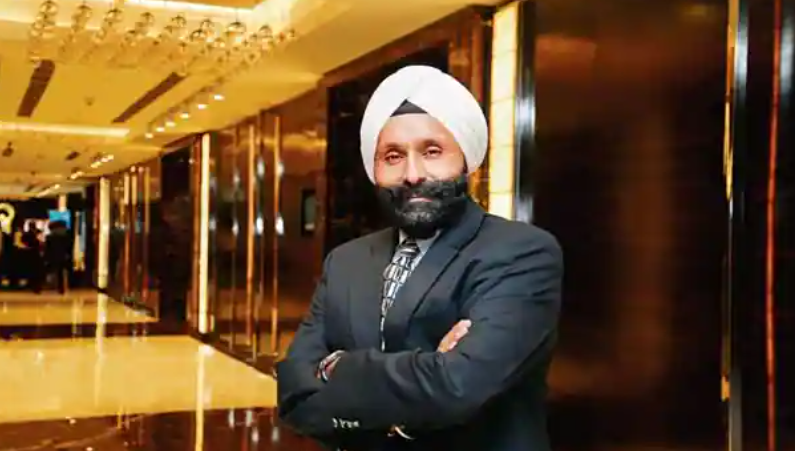Bhavdeep Singh is currently a Managing Partner at Whitehawk Associates LLC, an independent business management consultancy specializing in Retail, Human Resources, Leadership Development, and Healthcare. He is also Chairman and co-founder of HealthQuarters, a new destination for curated and clinically-backed health and wellness services in downtown New York City.
Over his 30+ year career, Bhavdeep Singh has experienced many great successes leading several multi-billion-dollar companies and overseeing tremendous growth under his watchful eye. But in 2021, he transitioned from “employee” to entrepreneur with the creation of Whitehawk Associates, an advisory/consulting firm with clients in the healthcare, retail, and supply chain industries.
Before joining Whitehawk Associates and launching Healthquarters, Bhavdeep Singh gained an international reputation as a forward-thinking business leader serving as Head of US Operations for Ahold, a $26 billion business, where he had complete P&L oversight for 800 stores and 110,000 employees. Post that, he was the Chief Executive Officer of Fortis Healthcare, where he led one of the largest private health systems in the world and helped manage a network of more than 30 private hospitals across India.
With so much hands-on experience, including moving from part-time sales associate who cleaned bathrooms and swept the floor, all the way up to President at his first job, Singh has insight into many of management’s biggest questions. We were fortunate to spend time with Singh and discuss how he approaches building a team, keeping them happy, and getting results.
Building an effective team is perhaps one of the biggest challenges that any manager faces; not all personalities and work styles complement each other. So how does Singh surround himself with qualified people that work well together?
“I give a great deal of thought to the required skill sets, complementary roles, culture, work ethic, and teamwork. Once these foundational pieces are in place, I start focusing on ‘ways of working’ which is another way of articulating how the team will work together in a manner that is respectful, focused, and transparent,” Singh says.
“Once we get all of the above in place, it is then my job to articulate the vision and mission of the business, while also identifying the roles and responsibilities of each team member. If we can do that well, ensure that the required resources are in place, it’s then time for me to step out of the way and let the team do their thing.”
Connecting with the job candidate is critical, Singh says, especially when recruiting senior talent for a key leadership role in your organization. Assuming that the skill set and competence meet the needs of the position, the focus of the interview can turn to values and personal style. Singh also places emphasis on motivation, humility, confidence, sincerity, and passion.
In an interview with a prospective candidate, Singh asks the following questions:
“I ask about values;
I ask about success;
I ask about failure;
I ask about vision;
I ask about current events in the industry;
I ask hypothetical questions on potential business issues;
I ask about their dreams;
I ask about their concerns;
And finally, I ask if they have questions for me.”
As all experienced leaders know, conflict will inevitably arise, whether it is internal or external. It may be with coworkers, clients, or customers. During those challenging times, Singh stresses the importance of listening and identifying the root cause of the conflict:
“While all good leaders endeavor to build great teams and have a clearly articulated vision, there are still going to be instances where there is conflict, tension, and or some type of day-to-day internal/external challenges. When this does happen (and it will), this is the time for a manager to step in and get things in place. Very simply put, this is the crux of good leadership. With that said, depending on the issue, I would observe, listen and act after that. There is generally a root cause and we have to understand that and deal with it immediately.”
As a manager, Singh holds himself to the same, if not higher standards, than his team. He strives to be the hardest working person in the room. While this may be intimidating for a less motivated staff, he believes that his team will rise to the high expectations he sets for everyone.
“I stay active, start early, keep going till late; for me, it’s all quite simple – the job must get done – “no ifs or buts” are allowed – ever. To that, you have to be focused and very driven and I try to do just that every day, in every instance in every situation. As a manager, I am a task manager and my bar on accountability is quite high. I hold myself accountable to the very same standards if not more.”
Singh leads by example and trusts his employees to perform the job functions that they are hired for. While he has declared that he has never had a bad job, he admits that he has had difficult bosses that impacted how he felt about his role. This has shaped how he manages in his own career:
“As I have grown in my own career, I have realized that the worst kind of manager is one that is unsure and or an insecure boss. The lesson there has been to work hard on being a good manager that enables his/her team members to do well.”
As Bhavdeep Singh expands his first entrepreneurial venture, he continues to prioritize surrounding himself with like-minded leaders. His hard work, integrity, and motivation are matched only by his enthusiasm for what’s to come.
Original source: https://www.tmcnet.com/topics/articles/2022/06/21/452654-bhavdeep-singh-building-an-effective-team-getting-results.htm


